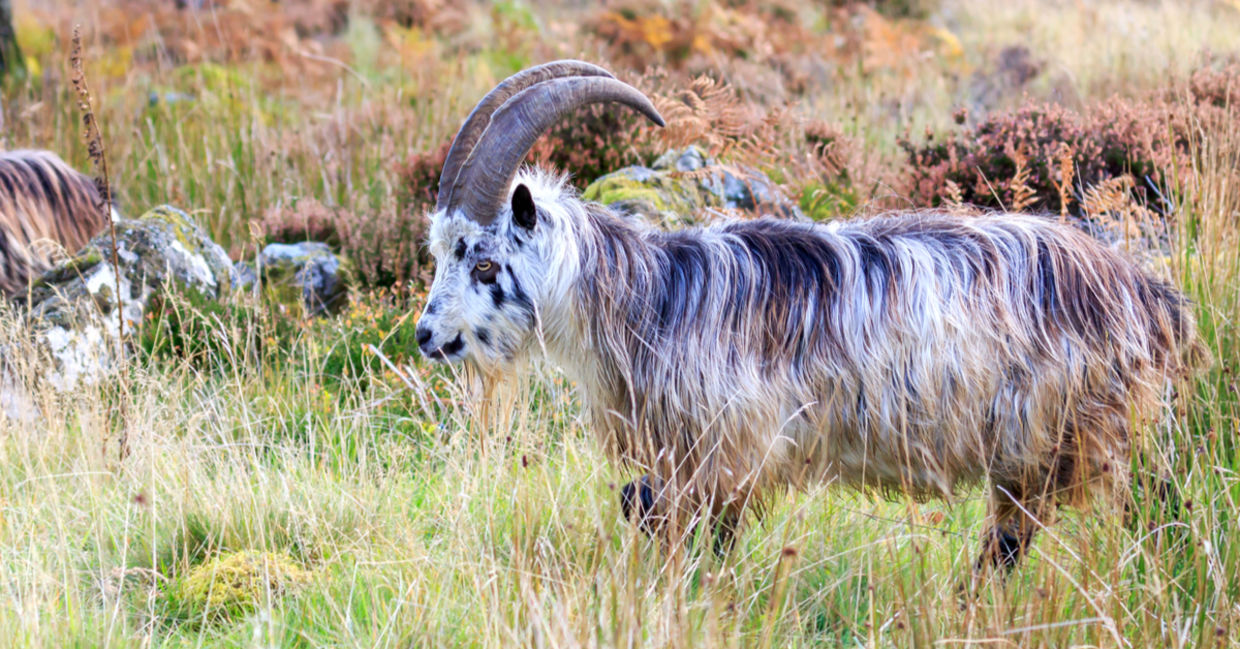
(Richard P Long / Shutterstock.com)
The sleepy Scottish municipality of Langholm was once a booming mill town, known for its textile and cotton manufacturing factories according to Undiscovered Scotland. Langholm’s residents have always been enormously proud of their land - each year, horsemen from the town lead an event commemorating the right of the people to the common land.
Langholm, nestled between rolling green Scottish hills in lush moorland, remained rich in natural beauty but over the last three decades, however, the town's textile industry shrank. Factory shutdowns led to a loss of 1,000 jobs over two decades. Struggling with the economic downturn, the town faced an exodus of residents. They formed the Langholm Initiative in 1994 to find post-industrial opportunities.
Seeing an opportunity for economic regeneration via responsible ecotourism, the people of Langholm decided to create a nature reserve. The Langholm Initiative, which is funded by community efforts, is preparing to purchase nearly 10,500 acres of moorland adjacent to the town, which will be managed by 2,000 local community residents.
According to Positive News, the initiative has already raised more than £3.million towards the purchase of the land, from individual donors and institutions like the John Muir Trust. The full purchase price is £6.4 million and the sale must be completed at the end of October 2020.
It’s hoped that the green space, to be named the Tarras Valley Nature Reserve, will bring tourists to the town. It will also support conservation efforts for local animals, some of which are endangered species, alongside indigenous flora and fauna.
Mike Daniels, head of land management at conservation charity the John Muir Trust, which donated £100,000 towards the effort, told Positive News, “The protection and restoration of wild places and the regeneration of rural communities goes hand in hand.”
In a video featured on Langholm Initiative’s site, project leader Kevin Cummings said, “At its heart, this project has unbelievable natural heritage. Langholm Moor is a site of special scientific interest and is a special protected area for breeding hen harriers.
“The most persecuted bird of prey in the UK has a stronghold here and their protection is just one of the many environmental goals of community ownership,” Cummings said. But this is just one of the species that is located on the land.
In an interview with Rewilding Britain, Cummings said, “In a single day you can stand under a sky of spectacular courting hen harriers, witness the silent hunt of a short-eared owl or be mesmerized by the intimate lekking of black grouse. You can be thrilled by the chase of merlin hunting a meadow pipit, you can smile as newly fledged dippers come to terms with life on the Tarras Water and laugh at the antics of the wild goat kids.”
Besides animal watching, tourists will be able to enjoy educational workshops, held while hiking with guides throughout the reserve, and kayaking.
“Conservation and development are often seen as opposing forces because in many places, development has been carried out at the expense of the natural environment,” Cummings said in the interview. “This is one of the main reasons why our project is so important: we will demonstrate how to deliver ecological restoration alongside the regeneration of a community.”
The Langholm Initiative is a powerful example of how a united community can make a tremendous impact on their surroundings. Not only are Langholm residents pursuing a solution that will stimulate the local economy, they are protecting their community’s environmental heritage by preserving traditional green spaces.
By embracing sustainable development, the people of Langholm are taking critical steps to ensure a brighter future for themselves and the generations to come.
YOU MIGHT ALSO LIKE:
Rewilding Nature, a Unique UK Conservation Project
Scotland Will Reach 100% Renewable Energy in 2020
Wales is Building the Largest Ever National Forest







